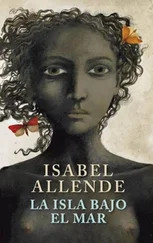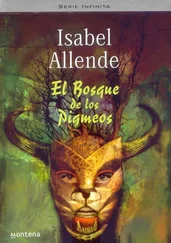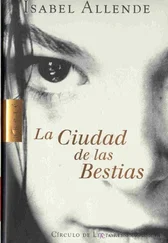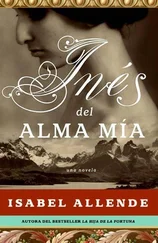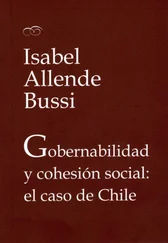Isabel Allende - Zorro
Здесь есть возможность читать онлайн «Isabel Allende - Zorro» весь текст электронной книги совершенно бесплатно (целиком полную версию без сокращений). В некоторых случаях можно слушать аудио, скачать через торрент в формате fb2 и присутствует краткое содержание. Год выпуска: 2005, ISBN: 2005, Издательство: Harper Perennial, Жанр: Исторические приключения, на английском языке. Описание произведения, (предисловие) а так же отзывы посетителей доступны на портале библиотеки ЛибКат.
- Название:Zorro
- Автор:
- Издательство:Harper Perennial
- Жанр:
- Год:2005
- ISBN:9780060779009
- Рейтинг книги:3 / 5. Голосов: 1
-
Избранное:Добавить в избранное
- Отзывы:
-
Ваша оценка:
- 60
- 1
- 2
- 3
- 4
- 5
Zorro: краткое содержание, описание и аннотация
Предлагаем к чтению аннотацию, описание, краткое содержание или предисловие (зависит от того, что написал сам автор книги «Zorro»). Если вы не нашли необходимую информацию о книге — напишите в комментариях, мы постараемся отыскать её.
Zorro — читать онлайн бесплатно полную книгу (весь текст) целиком
Ниже представлен текст книги, разбитый по страницам. Система сохранения места последней прочитанной страницы, позволяет с удобством читать онлайн бесплатно книгу «Zorro», без необходимости каждый раз заново искать на чём Вы остановились. Поставьте закладку, и сможете в любой момент перейти на страницу, на которой закончили чтение.
Интервал:
Закладка:
Twice a week Diego had to make the trip to the San Gabriel mission to receive the rudiments of a proper education from Padre Mendoza.
Bernardo always went with him, and the missionary eventually allowed him into the class despite his belief that it was unnecessary, and even dangerous, to give Indians too much learning; it put bold ideas into their heads. The boy did not have Diego’s mental quickness and tended to get behind, but he was stubborn and did not back down, though it meant spending his nights burning the candle down to the end. He had a reserved and quiet nature that contrasted with Diego’s explosive happiness. He backed his friend with unquestionable loyalty in all the pranks Diego thought up and, when he had to, resigned without fuss to being punished for something that had been Diego’s idea, not his. Ever since he could walk, Bernardo had assumed the role of protecting Diego, who he believed was destined for great things, like the heroic warriors in White Owl’s storehouse of myths.
Diego, for whom being quiet and indoors was torture, often schemed to slip away from Padre Mendoza’s lessons and get out in the open. He put as much energy into games as Bernardo did into studying. The lessons came in one ear and he recited them quickly, before they went out the other. He was so good at bluffing that he succeeded in fooling Padre Mendoza, but afterward he would have to teach Bernardo the lesson word for word, and it was by this repetition that he learned. After much discussion they reached an agreement: he would instruct Bernardo, and he in turn would practice the lasso, whip, and sword with Diego.
“I don’t see why we work so hard to learn things we won’t ever use.”
Diego complained one day after he had been repeating the same Latin phrases for hours.
“Sooner or later you use everything,” Bernardo replied. “It’s like the sword. I will probably never be a dragoon, but it is still good to learn fencing.”
Very few citizens of Alta California knew how to read and write, except the missionaries; they were rough men, nearly all from the country, but they at least had a varnish of culture. There were no available books, and on the rare occasions that a letter arrived, it was assumed that it contained bad news, so the addressee was in no rush to take it to a friar and ask him to decipher it. Alejandro de la Vega, however, had a fancy for education, and for years he had tried to attract a teacher from Mexico City. By then, Pueblo de los Angeles had grown to more than the town with four streets that he had seen born; it had become a required stop for travelers, a place for sailors from the merchant ships to rest ashore, and the center of the region’s commerce.
Monterey, the capital, was a long way away, so most matters of government were aired in Pueblo de los Angeles. Except for authorities and military officers, the population was mixed, referred to as gente de razon, respectable people, to distinguish them from Indians and servants. Pure-blooded Spaniards were a class apart. The town now had a bull ring, a brand-new brothel staffed by three half-Mexican girls of negotiable virtue, and an opulent mulatto from Panama, whose price was fixed and not cheap. There was now a building for the meetings of the alcalde and the councilman, which also acted as a courthouse and theater where light operas, moralistic plays, and patriotic ceremonies were presented. A bandstand had been built in the Plaza de Armas, and musicians enlivened the evening hour of the paseo when, under the watchful eyes of their parents, young promenaders, looking their very best, strolled around the plaza, the girls in one direction and the boys in the other. But hotel? There still was none; it would be ten years before the first was built. Travelers took lodging in the homes of wealthy citizens, where there was always food and a bed to welcome anyone in need of hospitality. In view of such progress, Alejandro de la Vega considered it indispensable for the town to have a school. No one shared his concern. With his own money then, completely on his own, he founded the first school in the province, and for many years it would be the only one. It opened its doors just as Diego turned nine and Padre Mendoza announced that he had taught the boy everything he knew, except for saying mass and exorcising demons. The building was as dark and dusty as the jail, located on a corner of the main plaza and furnished with a dozen iron benches; a menacing-looking whip hung beside the blackboard. The teacher turned out to be one of those insignificant little men whom the slightest hint of authority converts into a brutal tyrant. Diego had the bad fortune to be one of his first students, along with a handful of other male children, the budding sprouts of the well-to-do families of the town. Bernardo was not allowed to attend, even though Diego begged his father to let him come.
Alejandro de la Vega found Bernardo’s ambition praiseworthy, but he decided not to make an exception; if one Indian were accepted, others would have to be let in, and the teacher had already announced, with unmistakable clarity, his intention to leave if any Indian so much as stuck his nose into his “honorable establishment of learning.” The need to teach Bernardo, more than the intimidating whip, motivated Diego to pay attention in his classes. Among the students was a certain Garcia, son of a Spanish soldier turned tavern owner, a fat boy, not overly bright, with flat feet and a foolish smile, the teacher’s favorite victim and that of the students, who tormented him ruthlessly. Through some desire for justice that he himself could not explain, Diego became Garcia’s defender, winning the pudgy boy’s fanatic admiration.
For Padre Mendoza the years were taken up by many chores farming, herding cattle, and Christianizing Indians and he still had not repaired the church roof that had been damaged during Toypumia’s attack, when the explosion had shaken the building to its foundations.
Every time the good father held up the host to consecrate it during mass, his eyes inevitably fell on the weakened beams; he would promise himself with alarm to fix them before they crashed down upon his small congregation, but just as inevitably he had to tend to other matters and would forget his intentions till the next mass. Worse, termites were devouring the wood in the building, so it should have been no surprise when finally the accident Padre Mendoza had feared happened.
Fortunately, it was not when the entire congregation was present, something that would have been catastrophic. It came during one of the many temblors that frequently shook the area it wasn’t for nothing that their river was named Jesus de los Temblores. The roof collapsed on a single victim, Padre Alvear, a sainted brother who had traveled from Peru to visit the San Gabriel mission. The noise of the roof’s giving way and the cloud of dust brought the neophytes running, and they immediately started clawing at the rubble to unearth the unfortunate visitor. They found him squashed like a cockroach beneath the main beam. In all logic he should have died, because it took them most of the night to rescue him, and all the while the poor man’s lifeblood was oozing away. But God performed a miracle, as Padre Mendoza explained, and when finally they pulled the victim from the ruins, he was still breathing. Padre Mendoza needed only one glance to recognize that his meager knowledge of medicine would not save the wounded man, however much help he received from the divine power. Without a moment’s hesitation, he sent a neophyte with two horses to look for White Owl.
Over the years he had become convinced that the Indians’ veneration of the woman was fully justified.
By chance, Diego and Bernardo arrived at the mission the day after the earthquake, bringing two fine horses that Alejandro de la Vega had sent as a gift to the missionaries. Since no one came out to greet them or thank them everyone was occupied in sifting through the damage from the quake and tending to the dying Padre Alvear the boys left the horses in the corral and stayed on to watch the spectacle.
Читать дальшеИнтервал:
Закладка:
Похожие книги на «Zorro»
Представляем Вашему вниманию похожие книги на «Zorro» списком для выбора. Мы отобрали схожую по названию и смыслу литературу в надежде предоставить читателям больше вариантов отыскать новые, интересные, ещё непрочитанные произведения.
Обсуждение, отзывы о книге «Zorro» и просто собственные мнения читателей. Оставьте ваши комментарии, напишите, что Вы думаете о произведении, его смысле или главных героях. Укажите что конкретно понравилось, а что нет, и почему Вы так считаете.





